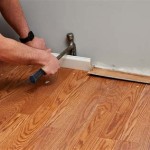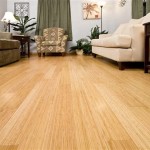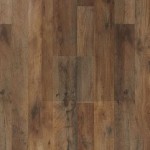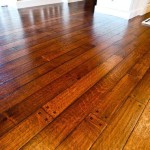Exploring the Versatility and Benefits of 2-Inch Engineered Wood Flooring
Engineered wood flooring has become a popular choice for homeowners and builders alike, offering a balance of aesthetic appeal, durability, and affordability. Within the spectrum of engineered wood options, 2-inch engineered wood flooring presents a specific set of characteristics that warrant careful consideration. This article will delve into the features, advantages, disadvantages, and installation considerations associated with this particular flooring type, providing a comprehensive overview for those considering it for their projects.
The term "2-inch engineered wood flooring" typically refers to the width of the individual planks. While the nominal thickness of the flooring is often expressed, the plank width significantly influences the visual impact and overall feel of a room. A 2-inch plank offers a distinct aesthetic compared to wider or narrower options, creating a different sense of scale and rhythm within the space. Determining whether this width is suitable for a specific project hinges on understanding its inherent properties and how it interacts with the overall design.
Aesthetic Considerations and Design Impact
The visual impact of 2-inch engineered wood flooring is characterized by its inherent linearity and the creation of numerous parallel lines across the floor surface. This narrow plank width tends to elongate a room visually, making it appear longer and more spacious, particularly when installed parallel to the longest wall. This effect can be especially beneficial in smaller rooms or hallways where maximizing the perception of space is paramount. Conversely, in excessively large rooms, the numerous seams might appear visually busy or overwhelming, potentially detracting from the overall elegance.
The choice of wood species and finish further influences the aesthetic outcome. Lighter wood species like maple or birch, combined with a natural or light stain, enhance the sense of openness and brightness. Darker wood species, such as walnut or cherry, paired with a rich stain, can introduce warmth and sophistication, although they might also make the room feel smaller. The finish (matte, satin, or gloss) affects the light reflectivity and texture of the floor, contributing to the overall ambiance. A matte finish, for instance, minimizes glare and conceals minor imperfections, while a gloss finish enhances the wood's natural luster but requires more diligent maintenance.
The subfloor preparation is a critical factor influencing the final visual result. An uneven subfloor will translate into unevenness in the finished flooring, disrupting the linear aesthetic of the narrow planks. Therefore, meticulous leveling and smoothing of the subfloor are essential for achieving a professional and visually appealing outcome. Additionally, the choice of installation pattern (straight lay, herringbone, or diagonal) impacts the perceived dimensions of the room and the overall visual complexity. While straight lay is the most common and simplest, more intricate patterns can add a touch of sophistication and visual interest but necessitate more precise installation and potentially more material waste.
Structural Advantages and Disadvantages
Engineered wood flooring, by its very nature, offers certain structural advantages over solid hardwood. Its multi-layered construction, typically comprising a hardwood veneer bonded to a core layer of plywood, high-density fiberboard (HDF), or other composite material, provides enhanced dimensional stability and resistance to warping or cupping. This makes it suitable for installation in areas with fluctuating humidity levels, such as basements or kitchens, where solid hardwood might be prone to movement. However, the specific structural performance of 2-inch engineered wood flooring depends heavily on the quality of the core material and the thickness of the hardwood veneer.
The narrow width of the planks can, in some cases, contribute to increased stability. The narrower the plank, the less susceptible it is to expansion and contraction across its width due to changes in humidity. However, the joints between planks become more numerous, potentially increasing the risk of water penetration if the installation is not properly sealed. Precise installation and the use of a suitable moisture barrier are crucial for mitigating this risk.
The thickness of the hardwood veneer is a critical determinant of the flooring's durability and longevity. A thicker veneer allows for more sandings and refinishings over the lifespan of the floor, enabling the restoration of its original appearance in case of scratches or wear. A thinner veneer, on the other hand, offers less opportunity for refinishing and may require eventual replacement of the entire floor. Therefore, when considering 2-inch engineered wood flooring, it's crucial to inquire about the veneer thickness and assess its suitability based on the expected level of foot traffic and wear.
Installation Considerations and Best Practices
The installation of 2-inch engineered wood flooring requires precision and attention to detail, especially due to the narrow plank width and the increased number of seams. A level and clean subfloor is paramount, as any imperfections will be amplified by the narrow planks. Prior to installation, the flooring should be acclimated to the room's temperature and humidity for several days to minimize expansion and contraction after installation. This is a crucial step, often overlooked, that significantly impacts the long-term stability of the floor.
There are several installation methods available, including glue-down, nail-down, and click-lock systems. Glue-down installation provides the most secure and stable bond between the flooring and the subfloor, minimizing movement and reducing the risk of squeaking. However, it requires more specialized skills and is more difficult to remove if necessary. Nail-down installation is suitable for wooden subfloors and involves using nails or staples to secure the planks. Click-lock systems offer a floating floor installation, where the planks interlock without the need for adhesives or fasteners. This method is generally easier for DIYers but may not provide the same level of stability as glue-down or nail-down installations.
Regardless of the installation method, it's essential to maintain consistent spacing between the planks (expansion gap) around the perimeter of the room to allow for natural expansion and contraction. This gap is typically covered by baseboards or quarter-round molding. When installing in areas prone to moisture, such as bathrooms or kitchens, a waterproof membrane or sealant should be applied to protect the subfloor and prevent water damage. Furthermore, proper ventilation and climate control should be maintained to minimize fluctuations in humidity and temperature, extending the lifespan of the flooring.
Cutting the narrow planks accurately is essential for a professional-looking installation. A high-quality saw with a fine-tooth blade is recommended to minimize splintering and ensure clean cuts. When installing in intricate patterns, such as herringbone, precise cutting and meticulous alignment are crucial for achieving a visually appealing result. It is often advisable to hire a professional installer for complex installation patterns.
Regular maintenance is essential to preserve the beauty and longevity of 2-inch engineered wood flooring. This includes regular sweeping or vacuuming to remove dust and debris, occasional damp mopping with a pH-neutral cleaner specifically designed for engineered wood floors, and the use of protective pads under furniture legs to prevent scratches and dents. Avoid using harsh chemicals or abrasive cleaners, as they can damage the finish and dull the appearance of the floor. Promptly clean up spills to prevent staining or water damage. With proper care and maintenance, 2-inch engineered wood flooring can provide years of beauty and functionality.
The choice of underlayment beneath the engineered wood also contributes significantly to its performance. Some underlayments offer added sound insulation, reducing noise transmission between floors, while others provide a moisture barrier or enhance the floor's overall comfort underfoot. It is crucial to select an underlayment that is compatible with the chosen installation method and meets the specific requirements of the project.
In summary, 2-inch engineered wood flooring offers a unique blend of aesthetic appeal and practical advantages. While the narrow plank width presents certain installation challenges and may not be suitable for all spaces, its ability to elongate a room visually and its inherent stability make it a compelling option for specific design applications. Careful consideration of the wood species, finish, installation method, and maintenance requirements is essential for maximizing the floor's beauty, durability, and longevity.

Engineered Hardwood Flooring Lumber Liquidators

White Oak 2 1 4 Unfinished Contractor S Choice Collection Engineered Hardwood Flooring By The Garrison Factory
.png?strip=all)
5 8 X 2 1 4 Unfinished Engineered Select Better Red Oak With 4mm Wear Layer

Engineered Hardwood The Home Depot

Euro White Oak Wide Plank Engineered Hardwood Floo

2 1 4 X 3 White Oak Select Better Unfinished Engineered Hardwood Flooring

4 Things To Know Before An Engineered Hardwood Floor Carlisle Wide Plank Floors

American Walnut Natural European Oak Modern Engineered Wood Flooring 7 5 Wide

Wide Plank Rustic Hickory Flooring Pre Finished Hardwood

Oak Natural Red 2 1 4 Great Lakes Flooring Quality Service Innovation
Related Posts








